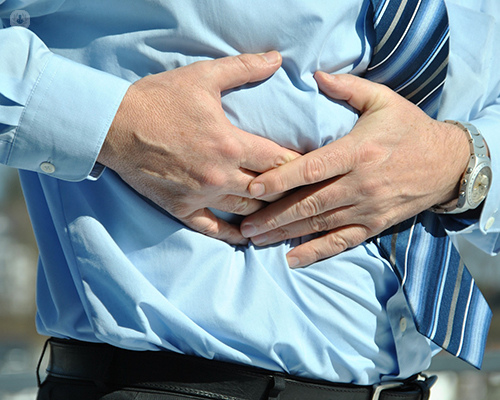Gallstones: what are they and where do they come from?
Written by:Gallstones are hard lumps or stones, usually made of cholesterol which form in the gallbladder, a small organ located under the liver responsible for the secretion of bile into the digestive system. Leading surgeon Professor Hemant Kocher tells us everything we need to know about gallstones.
What are gallstones?
They are stones formed within the gallbladder. In most cases, they arise from the gallbladder and can go in other parts of the bile duct or in other parts of the bowel. They are mainly composed of cholesterol, bile salts, bile pigments and sometimes other materials such as calcium and they are formed mainly in women, but can happen in men too. They are usually found in middle-aged people, but can happen in youth or in old age.
Gallstones are a very frequent condition. If we were to scan people on the street, five out of one hundred people in the age range of 20-60 would have them. It is not completely clear what causes them, however, we do know that they are common in women, mainly in the child-bearing age groups of 15-45 years. They can also happen in men and in very young ages, or in older people.

What does a gallstone look like
They can come in all shapes, sizes and colours, but most commonly they are diamond shaped and yellow in colour. These are known as cholesterol gallstones which are the commonest type that we see, however, they can take any colour from pale white to dark brown and pale green to dark green.
In terms of size, they can be a few millimetres across and they can be up to three centimetres in diameter. When the stones erode into the surrounding structures, such as the gallbladder, the bowel or the liver, they may assume colours from those organs. With regards to their shape, they can be smooth and round or they can be faceted like diamonds.
What causes gallstones?
We generally think gallstones form because the gallbladder is not working properly. As a result, the crystals within the bile which are normally stored in the gallbladder manage to crystallize. Once they crystallize, they can sediment. For example, if lemonade is left alone you will see a sediment forming at the bottom. If this sediment is not cleared by a normally functioning gallbladder, then it can crystallize to form stones. They usually start in very small sizes, but can continue grow.
Their composition is made up of things which are common in bile such as cholesterol, bile salts or bile pigments. Very rarely, gallstones can also contain calcium and in these cases, they cannot be broken down by a lithotripter which is common with kidney stones.
What are the symptoms of gallstones?
Surprisingly, most gallstones are asymptomatic. That means they cause no problems whatsoever. However, they can give rise to pain at the top part of the tummy or on the right-hand side. This pain is usually colicky in nature. That means it comes and goes in waves and it may move towards the right shoulder. Sometimes, the symptoms can be very severe, and this happens when the gallstones are complicated, for example, cholecystitis, which is inflammation or infection within the gallbladder. Rarely, they can cause other severe symptoms such as pancreatitis where the pain is severe, unremitting, and is felt towards the back. Very rarely, they can block the bowel, in which case, vomiting can be produced accompanied by severe central tummy pain.
What is your top tip to help prevent gallstones?
They can be prevented by having a healthy, balanced diet that is low in fat. It also known that gallstones are common in people who take oral contraceptive pills, therefore, reconsidering a different method of contraception that is not the oral contraceptive pill can help to prevent the creation of stones.
For more information about this condition, or to book an appointment with a specialist make an appointment here.


